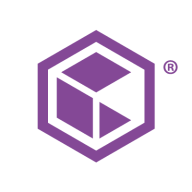

Commvault Cloud and Dell PowerProtect Data Manager are two leading data protection solutions. Users appear more satisfied with the pricing and support of Commvault Cloud, but Dell PowerProtect Data Manager has noteworthy features that make it a valuable investment.
Features: Commvault Cloud users highlight its robust data management, ease of integration, and comprehensive data backup. Dell PowerProtect Data Manager offers comprehensive data protection, high scalability, and seamless recovery options.
Room For Improvement: Commvault Cloud users desire better reporting, a more streamlined configuration process, and improved user interface. Dell PowerProtect Data Manager needs more intuitive navigation, faster updates, and enhanced user training materials.
Ease of Deployment and Customer Service: Commvault Cloud is praised for its straightforward deployment and responsive customer service. Dell PowerProtect Data Manager is noted for a smooth setup but receives mixed feedback on support services.
Pricing and ROI: Users find Commvault Cloud to be competitively priced with a strong ROI. Dell PowerProtect Data Manager, while more expensive, is recognized for delivering high value over time.
| Product | Market Share (%) |
|---|---|
| Commvault Cloud | 6.0% |
| Dell PowerProtect Data Manager | 3.7% |
| Other | 90.3% |


| Company Size | Count |
|---|---|
| Small Business | 57 |
| Midsize Enterprise | 24 |
| Large Enterprise | 81 |
| Company Size | Count |
|---|---|
| Small Business | 6 |
| Midsize Enterprise | 2 |
| Large Enterprise | 6 |
Commvault Cloud is the ultimate cyber resilience platform built to meet the demands of the hybrid
enterprise. Beyond its core functionality of data backup and recovery across diverse workloads, including applications, databases, virtual machines, and files, Commvault Cloud stands out as a robust defense against ransomware. Going beyond backup, the platform integrates advanced data security features such as encryption, access control, and threat detection, safeguarding against unauthorized access and cyber threats.
With tools for data management, classification, and migration, businesses can optimize storage costs, enhance accessibility, and comply with regulations seamlessly. Boasting cloud integration with major providers like AWS, Azure, and Google Cloud, Commvault Cloud leverages the scalability and flexibility of the cloud for comprehensive data protection and management. The platform's automation capabilities streamline tasks, and its reporting and analytics features provide valuable insights into data usage, potential risks, and optimization strategies. Commvault Cloud is not just a security tool; it is a key component of cyber resilience, enabling organizations to not only protect against cyberattacks but also recover swiftly and minimize the impact of incidents. Elevate your cyber resilience strategy with Commvault Cloud.
Dell PowerProtect Data Manager provides efficient backup and recovery for hybrid and multicloud environments. It consolidates VMware, Kubernetes, database, and file system protection through a singular interface.
PowerProtect Data Manager is a software-defined platform that integrates modern backup and recovery capabilities, focusing on enhancing performance metrics like RPO and RTO. It supports operations through automated discovery, policy-driven protection, and intelligent analytics while offering cloud mobility and robust cyber recovery mechanisms. Its architecture is designed to address complex data management needs while providing flexibility, backup efficiency, and capacity management. With capabilities spanning on-premise and cloud options, it delivers a comprehensive approach for data protection.
What key features make Dell PowerProtect Data Manager stand out?Organizations in telecom and enterprise sectors employ Dell PowerProtect Data Manager for backing up and securing data in virtual and cloud-native environments. It supports continuous data protection for VMware and Kubernetes and plays a crucial role in ensuring container stability in platforms like OpenShift. Its native application integrations and disaster recovery through incremental backups make it suitable for larger businesses seeking a reliable data management partner.
We monitor all Backup and Recovery reviews to prevent fraudulent reviews and keep review quality high. We do not post reviews by company employees or direct competitors. We validate each review for authenticity via cross-reference with LinkedIn, and personal follow-up with the reviewer when necessary.